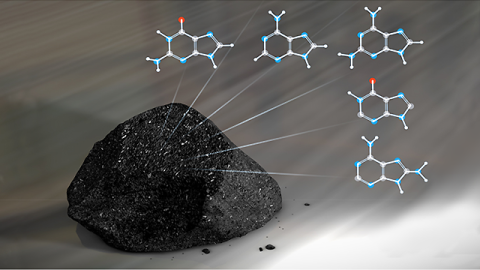Which Came First, Life or Earth?

There is a tendency for people to think science knows more than it knows. We hear phrases like “gaps in our knowledge” all the time, when in fact what we mainly have is knowledge in our gaps.
The vastness of our scientific ignorance is especially evident when it comes to explaining how life arose on earth. There is not only no consensus view on the subject, there is not even any consensus on which of the many available candidate theories deserve to be candidate theories.
The difficulty of the problem was aptly summed up by Lynn Margulis (the scientist who first proposed a bacterial-endosymbiont theory of mitochondrial origin). “To go from a bacterium to people,” she said, “is less of a step than to go from a mixture of amino acids to a bacterium.”
For example, we don’t know whether polypeptides came first, or nucleic acids. Somehow, each had to arise spontaneously (barring divine intervention), and somewhere along the line, nucleic acids became the templates not only for their own reproduction but for the production of proteins. We have no good models for how this happened—at all, let alone in the short time provided. By “short time,” I’m referring to the fact that life appeared relatively quickly after Earth’s formation. By some estimates, cellular life was present on Earth 4.3 billion years ago, only 200 million years after the planet’s formation. That’s barely enough time for Earth to cool down to the point where seawater won’t boil.
The “short time” problem has not gone unnoticed by scientists. It creates an embarrassing problem of its own, which is that if life can occur so quickly in barely hospitable conditions, why is it not arising continuously, even now, under today’s more hospitable conditions? In other words, as physicist Paul Davies said, “If life pops up readily in Earth-like conditions, surely it should have started many times right here on Earth?” And yet, as far as we know, there is no evidence in our natural surroundings of any precellular or other biogenesis actively underway. We don’t find self-replicating non-cell-associated RNA molecules in tide pools, for example. (Or maybe people just haven’t been looking hard enough?)
The short-time problem was recently summarized in a controversial paper by Alexei Sharov and Richard Gordon called “Life Before Earth.” Sharov and Gordon observed that evolution follows Moore’s Law, with complexity increasing in logarithmic fashion as a function of time (which is not such an original idea), but when you plot log-genome-complexity versus time of appearance, you get a straight line that, when back-extrapolated, doesn’t reach zero until T-minus-9.8 billion years. In other words, according to Sharov and Gordon, life must have originated before Earth was formed, since it didn’t have enough time to develop here.

The Sharov-Gordon graph can be criticized on any number of grounds. (I don’t think any serious scientist would put the slightest bit of stock in it, actually.) But it does hint at the difficulty of explaining life’s appearance on early Earth, and it shows the desperate lengths to which some scientists are willing to go to explain the unexplainable.
What would be helpful is if we could find physical evidence of the presence of nucleic acids or their building blocks in early terrestrial mineral deposits, or if we could find mineralized evidence for the early existence of proteins (“early” as in pre-cellular-life ca. 4.2 bYa). It might well be that we’ve actually already found such things: Carbonaceous meteorites (which often contain amino acids and nucleotides) could be considered evidence of ancient, pre-cellular existence of biologic materials; and it’s possible many of these meteorites are simply returning fragments of early earth (that is to say, returning ejecta from early asteroid collisions).
I hope NASA (and other) scientists are looking not only for amino acids and nucleotides in some of these meteors, but also for catalytic substrates of a kind that might have given rise to biological polymers or their precursors. The whole problem may boil down to finding a “God catalyst.”





